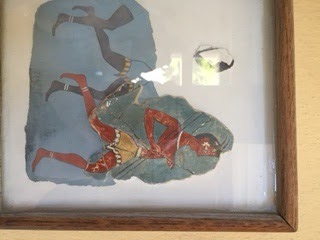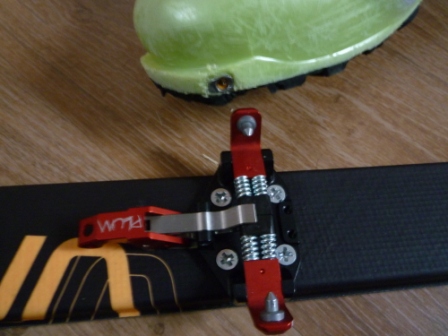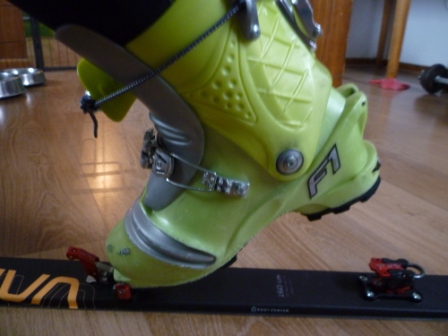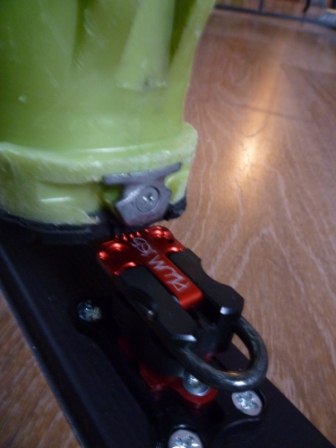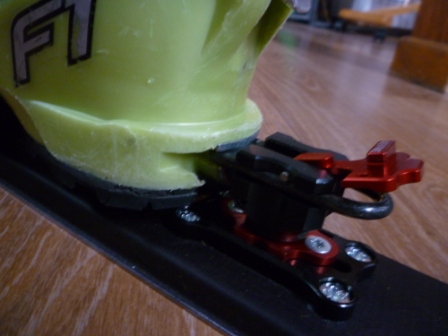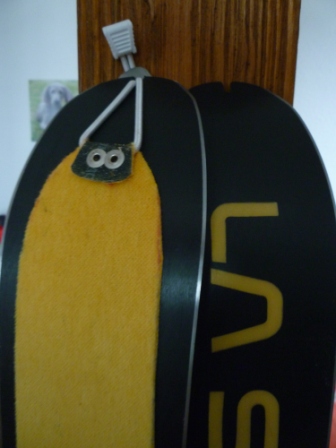Written by Stuart Shipley
I am going to miss the Spartathlon this year and surprisingly not entirely to attempt to assuage the prior DNF’s.
I will miss the endless poring over results and times and trying to extrapolate them into deciding whether I have any chance of finishing this year. There is no correlation and I should know better by now. A good GUCR finish doesn’t mean a Spartathlon finish any more than a bad one means another DNF.
I will miss the smell of heat as I get off the plane in Athens. I will miss the bus journey to Glyfadaand, after all this time still being unsure where to get off the bus. I will also miss the deathrace across the road to get to the hotel.
I will miss the hotel. I will miss the room lottery and staggering back up the road with a bag that now weighs twice what it did when I got off the plane to try and find on what hotels list I am. It will be the last one.
I will miss … really I will, the meals at Hotel London. I will miss trying to decide just what meat it is on my plate and looking forward to see if I will get any meat at all in the Bolognese, though I know inevitably that it will be just pasta and sauce.
I will miss emptying my bag onto the bed, making decisions in conjunction with my detailed list of CP’sand cut-off times todecide exactly what to put in my drop bags, and at the same time wondering whether I will actually need any of them. I will miss trying to work out how to make the bag stand out in the event that I might just reach it.
I will miss the drop bag drop-off, trying to find exactly which box to put it in and wonder what I’ll do if I make a mistake and then deciding that it isn’t going to matter at all, especially with the later ones.
I’m going to miss missing the pre-race talk. I know exactly what lies ahead (well, at least for the 1st 97miles I do … and even then I know what the rest looks like from the bus) and don’t need anyone telling me in several different languages that its going to be hot and to watch the traffic. So I’ll miss not nipping into Athens on the tram instead and doing some pointless wandering round a couple of antiquity sites wondering whether I should in fact be lying down trying to conserve what energy I wonder whether I have or not.
I’m going to miss the multinational nature of the runners and the camaraderie that exudes from everyone without the need for a common language to express it. It is enough to smile and know that we share a common goal. I’m also going to miss trying to work out which runners will/will not make it and comparing myself to them since I never get it right. Yes, they all look fitter than me, yes I have more body fat, yes, most of them won’t make it either and no, there is no way out now.
I’m going to miss that last breakfast. Well, in fact I usually do miss it anyway. A banana is all I can usually stomach.
I’m going to miss that bus trip to the start and the smells of all sorts of body rub … and odour … and fear.
I’m going to miss getting out of the bus at the Acropolis, and the heat – even at that time of the day, and miss the fearful look up at the sky, and yes there will be stars … and as a consequence no clouds.
I’m going to miss chatting with the Brits whilst hanging around at the startwith that wonderfully understated attitude that we all have on such occasions. I will miss wondering whether I need that final dump, leaving it to the last minute and then deciding, yesI do (every time) and then miss trying to find a tree, in the gradually increasing light, that is free of runners doing exactly the same thing.
I’m going to miss the actual start a lot. This is where optimism rules and I feel good. I will miss looking back at the dawn behind the Acropolis, awesome. This is why I am here … although this year I am not.
I will miss Athens as well. The horns, the cars, the policemen, the mad motorcyclists and moped riders buzzing around, the locals all smiling and holding out hands and the mass of runners making their way out of the rush-hour, snaking uphill and uphill. I will miss the way those miles just evaporate like any of the wispy clouds that happened to be aroundtoo.
I will miss starting to realise that, yet again I have probably gone off too fast, and how much I hate running in heat.
I will miss the way my brain just then shuts off protecting me from recalling much else other than heavy trucks rumbling past (very close) till I get to Elefsis, where I will definitely miss the schoolkids and the wall of high fives.
I think I will still miss the way things just sort of deteriorate. It is all part of running this sort of distance and if it was easy it wouldn’t be worth doing. It is meant to be a challenge. But I will not miss it happening too early.
I will miss the highway to hell, which for me is the 2nd 25mile section, and which starts up ‘that hill’, where the heat of the day is starting to make itself felt and which coincides with the feeling that I am towards the end of the field now and needing to walk. I will miss ticking off the points where I have crumbled in the past and I will certainly miss the feeling I get where one of those ‘bad points’ is overcome and suddenly and against all odds I am feeling good again. I will miss feeling that if only I can get this section out of the way, I will be ok.
I will miss one of my drop bags since I will forget the obvious numbering system I designed to stop me forgetting it. I will miss all the CP’s too, struggling in vain to find something palatable left to eat by the time I get to them.
If I get that far I will miss walking up the hill to Corinth. Oh yes I will, really. For me at least, a good powerwalk is as good as running up here. I will also miss the canal, another awesome point, but I will not miss that unbelievably long next mile or so to the CP. No matter how many times I run this bit I always forget that its not ‘just cross the canal and you’re there’.
I will miss Hellas Canneries, even if by then I am on the bus. If I get here on my feet I will be right up against the deadlines but I know it’ll be getting cooler. If I get here on the bus I will miss not sharing in the races of those still in it and doing what I can to get them back out on the road.
I will miss the next bit, which is my favourite bit. I will miss coming to realise yet again that in reality it doesn’t get any easier wherever I am on this course. I will miss that battle with the cut-offs which for me has always been an ongoing and ever present hazard with which I have been in constant combat for at least the last 30miles. I will miss the razors edge of being +/- 5mins at each CP. I will miss spending the whole distance between each CP trying with a fried brain to translate kilometres into miles and deciding just what pace I need to get there to avoid being pulled. I will even miss the desperation and frustration, if it happens here, that despite all efforts I just cannot make it - for that is the essence of why I run and this, like no other run, makes me feel alive and hostage to those cut-offs.
I will miss Zevgolatio, my favourite CP. If I make it here I will still be up against the cut-offs but optimistic again. It will be dark and I will be entering a different stage of the run and I will miss my rice pudding. The mountains, the dark, the cicadas, the moon and stars, the thunder, the aches and pains, the inability to find any drop bags at all are all memories I will miss. I will miss the kids on totally non-legal scooters being perplexed when David Beckham signs their autograph books yet again.
I will miss how it all then gradually goes belly up. The missed drop bags, the missed food and missed electrolytes are to blame but I will miss being able to recognise that at the time and being able to consciously do anything to rectify it. I will miss those isolated little villages in the hills, with parties all of their own, trying to get me on my way but realising more than I do that the running side of their party is winding down. An oasis of light in a night of darkness.
I will miss the brainless and schizophrenic discussions with myself designed to alternately either keep me going or pull me out. A game of tennis swaying one way and then the other as the miles seem to lengthen undiscernibly. I can’t do it? Yes, I can. Why do I want to? What does it mean to me? Just pull yourself together you pussy and get on with it. I can’t, yes you can. And then if I don’t give up, more subtly … you will do yourself permanent damage, who cares – it’s worth it. What would your family think? It’s not safe to carry on like this and you know it.
I will miss realising that physically I was a corpse hours ago and that the mental ghost that continues is a fading shadow that ultimately can’t avoid slipping into oblivion. The Undead around me in a similar state and dropping off one by one are a subconscious verification that I must surely be doing the right thing by joining them.
I will miss that episode of chucking up and loose bowels that finally knocks me off the fence and convinces me the decision is made for me. Perversely I will miss that kick in the guts that follows 10minutes after the decision has been made, telling me it was the wrong one. The disappointment, the total emptying of any feeling other than total negativity being replaced so quickly by a feeling of anger and that I was too weak and should have gone on but equally annoyed that I was unable to win the argument with myself to that effect 10minutes earlier.
I will not miss that bus. I will definitely not miss that bus. Avoiding it has kept me going for miles.
I will miss Sparta. I will miss never having arrived there by foot but I will also miss the small town friendliness of the place itself. I long to see the sight of those lights that can be seen so far away from Sparta from somewhere other than the bus.
I will miss the next day. I will miss the watery lager beer & miss being proud to be part of a group that can set aside their personal feelings of disappointment and feel for those and share in the emotions of those few who do make it, arriving in dribs and drabs from before daybreak till its nearly dark again. Battered, limping, swaying but all smiling as they make their final way to the statue to collapse in its shadow. I will miss not knowing how it feels to be part of that group, oh how I miss that. We all have aims and goals and we all have to learn to accept our limitations but if I’m never back on this road to heartbreak again, I will still miss it, every day I have left on this earth I will miss it.
Written by Andy Mouncey - http://www.bigandscaryrunning.com/
Except that in my experience most runners stepping up to ultra distance running think it’s all about the distance.
Don’t get me wrong, the distance is what defines this sport – we are captivated by tales of people covering huge distances over big terrain at incredible speeds and what they go through to get to the finish line – and for me, the distance on it’s own is not the issue.
Here’s what I think:
I think that anyone can head out right now and cover 100 miles.
If you’re motivated enough, that is.
Now there’s also a bunch of stuff around self-management, and you will need to be able to practice the skills of perseverance – but the good news is that these can be learned - and if you strip everything else away I think there’s just one thing left: Leverage. (Or Motivation, if you prefer).
If you did head out here’s what I think would happen:
Some of you would take far longer than others.
Some of you would be in a box at the end.
And some of you would take an age to recover the desire to do any weight-bearing activity again.
And if you were motivated enough – I think you’d all get there. Eventually.
So if it really isn’t about the distance, why is it normal that so many people fail to finish an ultra? And that proportionally more men will fail to finish than women? Some of the bigger mountain races have a start to finish ratio of around 2:1 – that’s right, one out of two people will not reach the finish line.
If we take the assertion above then there’s clearly something about focus, desire and managing mood – but as some of us know to our cost, there also comes a point in ultras where no amount of Jedi mind tricks will keep you moving. Right at the extreme end of prolonged exertion the brain – charged as it is with self-preservation and maintaining homeostasis – will simply press the reset button and shut the body down. So on that basis there clearly is something physiological as well.
And then there’s the business end: Feet.
There’s no shortage of pictures in books, magazines and online of mashed and trashed extremities – usually accompanied by screaming and crying on behalf of the owner, and often by a Did Not Finish (DNF). So there’s clearly something about foot care and shoe choice as well.
So what’s the formula? Is there a secret and if so, who’s telling? While I think I’ve got some stuff figured out I also have a file the size of a house marked ‘Further Research Required.’ Guess that gives us some column inches over the next few posts then…
Written by Clare Holdcroft - http://www.mountainsinmind.com
Let me explain a little bit more about the meaning of my title above. By pole, I mean trekking pole, I’m not referring to a nationality of Europeans who have a red and white flag!
Etiquette according to the Oxford dictionary is described as:
The customary code of polite behaviour in society or among members of a particular profession or group. Noun.
Synonyms: protocol, polite behaviour, good manners, manners, acceptable behaviour, accepted behaviour, proper behaviour, code of behaviour, rules of conduct/behaviour.
The word etiquette originates from the French language (so we stole it!), which I thought was apt as my recent experience of using poles relates to the running of The North Face UTMB CCC race in France.
The use of trekking poles is a phenomena that has taken the ultra trail running community in Europe by storm. Their usage in the UK, however, is still a little frowned upon by some runners. Nonetheless, the popularity of using ‘cheat sticks’ as they are sometimes referred to, is on the increase, particularly on the longer ultra races in the mountainous regions.
The CCC race was the first time that I’d used trekking poles in a race. I bought a pair of the lightweight Mountain King Trail Blaze poles in a lovely girly magenta colour perfectly co-ordinating with my trainers! I must admit I was sceptical at first about using poles but with some of the huge ascents in the CCC, they really did prove their worth.
During the race, I saw poles used in a variety of ways along the course of the route so from my own empirical findings, I thought I’d put together my own lighthearted account of the variety of methods, techniques and styles that were displayed:
The Skier. Leans slightly forward and uses the poles to launch themselves forward pushing both poles out in tandem behind themselves.
The Flicker. The runner flicks their poles out wildly behind them therefore you have to maintain at least a three foot gap otherwise you’ll be inadvertently poked or prodded.
The Nordic Walker. A sensible and efficient approach, which many runners fail to remember during the course of a race. The poles are tucked in close at the runner’s sides and used effectively to propel the runner forward as they move along.
The Elbows Out. This runner thinks they own the path and they stick their elbows and their poles out at the sides to form a triangular shape taking up the whole width of the path ready to trip you up.
The Jabber. The runner carries the poles at an angle across their body or horizontal to the floor then with a swift motion catch or jab other runners in the kidneys or thigh as you try to overtake. I have a nice bruise on my leg as a result of this one!
The Irritator. This runner is multi-tasking, maybe faffing in their rucksack or with an item of clothing with the poles dangling from their wrists whilst letting the poles flail around, again ready to catch your ankles or to trip you up.
The Tapper. The runners that really feel the need to use the poles on any tarmac sections of the course so that they make an irritating metallic tapping noice.
 The Underarm Approach. Runners who carry their poles under their arm like an umbrella and have no spacial awareness around themselves so that they swipe everybody in their mist as they turn around. An alternative to this is the runner who carries them in their hand at the same angle.
The Underarm Approach. Runners who carry their poles under their arm like an umbrella and have no spacial awareness around themselves so that they swipe everybody in their mist as they turn around. An alternative to this is the runner who carries them in their hand at the same angle.
Of course, I’m not guilty of any of these apart from the Nordic walker approach (yeah right!) …but seriously, please let’s be sensible and safe when using your poles, guys. Have an awareness of others around you, practice your technique and it will save many a frustration from your fellow runners around you.
- Use of trekking poles on the CCC race in the Alps
- Completing the CCC
Written by Kevin O'Rourke - http://ultrakev.blogspot.co.uk
He first wrote the amazing book Born to Run: The Hidden Tribe, the Ultra-Runners, and the Greatest Race the World Has Never Seen which is still in my all time TOP 10 best books of my life and believe me I have read a lot of books in my time.
Then recently he released his latest book Natural Born Heroes: The lost secrets of strength and endurance.
This is a mish mash of stories about the 2nd world war hero's in Crete weaved cleverly with Parkour, strength training and other tales of heroic acts that mystify and entertain.
When I first read BTR as it's now commonly known I was drawn to email Caballo Blanco the mysterious white horse/ghost runner who is the main focus of the book. We conversed many times and I signed up to run the 3rd version of the race with a couple of other UK runners. Unfortunatly due to a stupid injury and cash issues I was unable to make the race and it is still one of my biggest regrets. Not because of not being able to race but also not actually being able to meet Micah True (Caballo).
For anyone who doesn't know the tale this fabled ghost runner died recenly doing what he loved best, running on the trails of the Copper Canyons in Mexico. His legacy will live on for many years with his race the CCUM (Copper Canyon Ultra Marathon) which was set up to help the Tarahumara people which this book BTR is based on.
So enough about BTR what about NBH (Natural Born Heroes).
The Cretan people according to MacDougall's book have long been associated with heroism. Zeus himself was born in Crete and Pheidippides the legendary Greek runner was also from Crete.
Like BTR this latest book has a main character and for me it is focused on George Psychoundakis a Cretan peasant who became a war hero in WW2 by continually relaying messages back and forth across the mountainous terrain of Crete. These routes were often ultra distance and over the craziest terrain I have ever run along.
I developed a huge respect for George with my exploration of a small part of Crete in the week I spent there on holiday in July.
It's not just the mountains, and there are many of them. It's more the punishing foliage that greets you at every twist and turn. Think UTMB on steroids and throw in a miriad of the nastiest bastard thorns along the lines of Barkley.
Not that I have experienced Barkley but I have seen the videos and read the reports and can only associate parts of the Cretan landscape with that sort of terrain.
I ran every day, and every day I got covered in scratches, twisted my ankles, feet and knees in every way imaginable. Now bear in mind I was running for fun, training for my next 100 mile run and so not covering vast distances and certainly not under constant threat of my life.
I did however get chased by a little handbag dog and another nasty little bastard. I learnt a new use for water bottles that day when a quick squirt in the face stopped them in their tracks!
The twists and turns, roots and rocks reminded me of the worst parts of the TDS and CCC in Chamonix. The scenery was spectacular and haunting at the same time. The Cretan people lived up to their reputation as the most hospitable people in the world. They are even a little odd at times as we found out one day on a drive through the mountains.
We stopped at a cross roads, hopelessly lost with a choice of 6 different roads to choose with little or no signage. It was reminiscent of the Northants 35 Ultra where there is a road like this that everyone gets lost at!
Suddenly this tiny old lady who was sheltering from the sun comes up to the car. It's lunchtime, bloody hot and we are in the middle of nowhere up the top of a mountain and there she is sitting in the little shade there was.
A brief unknown conversation starts and we try unsuccessfully to ask directions and she tries unsuccessfully to talk to us. Then she gets in the back of the car!!!
She then proceeds to tell us where to drive. This wily old woman wanted a lift and was going to take us roughly where we wanted to go as long as it was along the route she wanted to go.
We laughed long and hard the whole way as she blithered on in Greek about the towns, the scenery, food, at least that's what we thought she might be saying.
We drove for an hour around the craziest of roads and mountain passes and see some beautiful villages that you would not know existed. Always getting waves and Kalimera's from the lovely few people who lived there, in the middle of nowhere. We dropped her off and found out later that this is normal practise in the mountains for the people who live there.
They can wait for hours for a car to pass and then however many of them can fit will get into a car and be eternally grateful.
The Cretan's are also blessed with over 100 different edible weeds. These weeds it seems are natures Super Foods and all at our feet. Horta seems to be the favourite on the marketplace although Horta seems t be a word associated with a variety of different weeds which all look different. Think of spinach used in a salad or steamed with some olive oil and salt and a gazillion health benefits.
Kalitsounia was a sort of health pie that I searched high and low for but was unable to find. You can buy the sweeten version anywhere but the true Kalitsounia seems to be only available in the mountain villages. This is often made with Horta and local cheese and is supposed to provide immense nutrition to ultra marathon runners.
It seems the Cretans have a endless supply of highly nutritious food growing in abundance everywhere and this is another fabulous fact in NBH. Chris tells you all about the weeds you can eat and how amazing they can be for your body.
So would I go back......
In a heartbeat.
Crete was beautiful, magical and tougher than anything I can imagine. I would love to run an ultra there one day and experience more of the Island.
As for the book Natural Born Heroes.....well lets just say I now have it on Audible too as there are so many nuggets of fantastic information that you can often miss when reading it.
I highly recommend Crete for training camps or holidays but like any Greek island the true spirit is lost in the commercial, tourist parts and the best is always high in the sky. Up those bastard mountains covered in spiky, vicious brambles, tripping over rocks and roots in the trail of the heroes.
Written by Neil Bryant for the URC
I’ll be honest, I had never heard of Skimo till three or four years ago when a certain Kilian Jornet exposed it to me. Not personally of course, but I imagine there are a fair few of you reading this that were in the same boat. During Summer Killian is an incredible trail/mountain runner and in the Winter he swaps his running shoes for his ski boots, skis and skins, coming down even quicker than his summer descents.
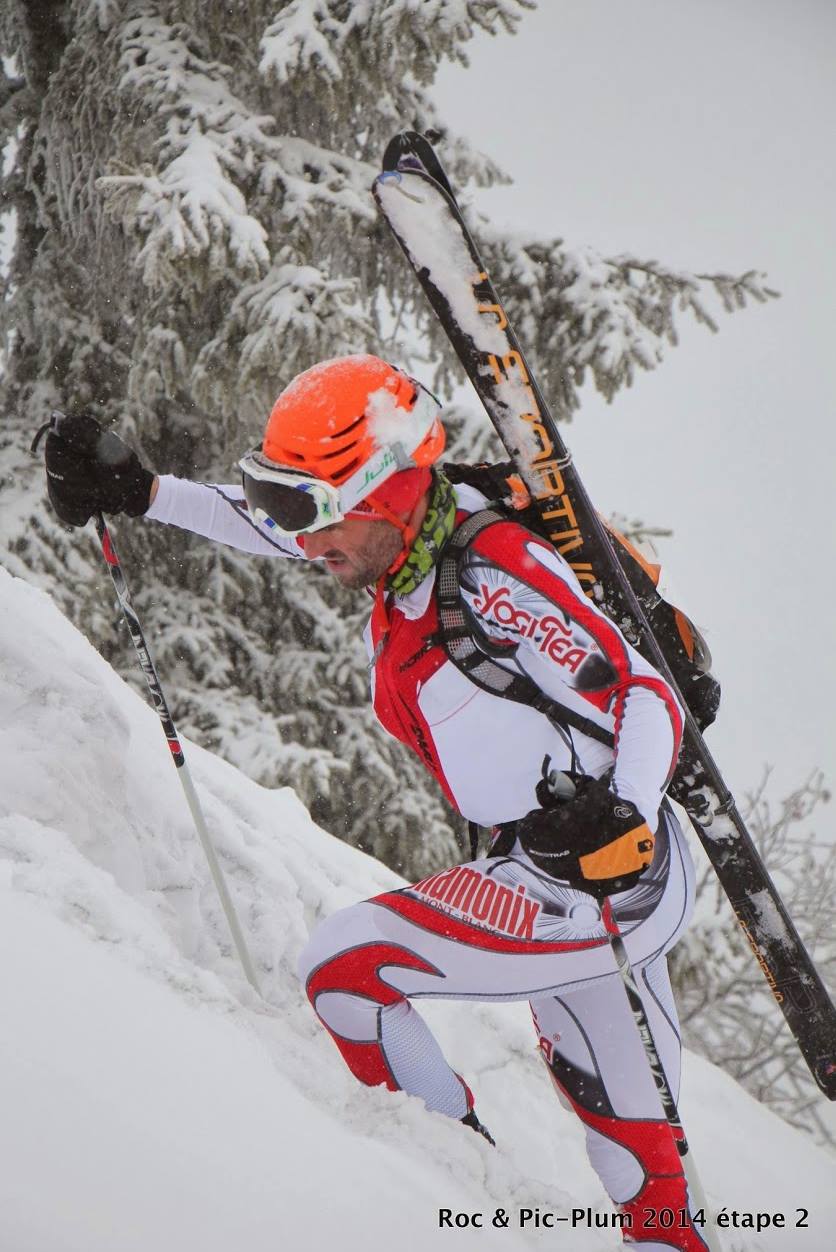
For me this was a world I literally knew nothing about and because it had this European exotic edge to it I think I was even more attracted. I had never skied in my life and had only spent a week snowboarding about 12 years ago. I was living in Bristol with no real skiable mountains in range so I think I had accepted I wouldn’t be getting into it seriously.
Life changed, and suddenly, or so it felt. I had moved to Chamonix as I wanted to escape my old job and life and more importantly, I wanted to be in the mountains.
I have now been living in Chamonix for over two and a half years, and our third winter is about to start. It has taken me a while to pick up the basics, but I now can go out and really enjoy myself while also getting an amazing workout. I also don’t need to use the lifts! It is fast (though not always!), liberating, exciting and takes you to some staggeringly beautiful places that nothing else can. You can do stuff that is simple and safe such as skinning up special skinning tracks and descending down pistes while at the other end of the spectrum more exciting stuff takes you far away from the crowds to the wild backcountry where there is a danger of avalanches and falling down glacier crevasses. Navigation, safety and reading the snow and weather makes the whole experience quite involved and incredibly rewarding.
Running is so simple in comparison, but there really is a crossover point that draws these activities together. It’s great to use the harsh Winters in the mountains rather than fight it.
What is it then?
So, if you are not sure, what actually does it mean, and what does it entail? Skimo is just a mix of Skiing and Mountaineering and is basically that. You would perhaps have a peak as an objective or you’ll just be going up a track and back down. The ascent is done in a number of ways, primarily though it will be on your skis which have special attachments which allow your heel to be free and skins on the bottom of your skis which are so named as seal skins were originally used. Skins glide easily forwards, but grip going backwards, making ascending possible. If conditions are a bit iffy then you can attach ski crampons which add a little bite. When it is too steep even for skinning, then the skis are mounted on your back and the bootpack commences. Bootpacking is just hiking really, and again if the terrain gets more technical, then boot crampons are utilised.
Of course beyond this is ice climbing etc. It is endless. Using skis means you can make the base of a winter climb (and return once complete) LOTS quicker.
Then of course, there is the descent which I don’t need to go into great detail about. An hour of hard graft to get to the top means you can be back at the bottom in 5 minutes. I imagine most of you have skied so will know how thrilling this can be! One of the great things about skimo, is the fact it can take you to some great places and that includes great descents with fresh powder!
What skills are required?
So, you have never skied before, could you try skimo? I think it would definitely be best to get some piste skiing under your belt first so there is a level of confidence with the descending. The great thing about piste skiing is it is great for practicing going down of course, whereas if you are spending an hour skinning to the top each time you are going to have less opportunities to practice the downs, not too mention you’ll be exhausted!
Once you are ok with the downs then maybe you can hire some touring skis and boots and find the local skintrack at the resort you’re in and try it out. This would be a great opportunity to get a feel for how it feels to skin (how hard it is!) and to get familiar with the boots, bindings and skins. Once at the top, you will generally be at the top of a piste meaning you have an easy, safe way down.
Equipment
One of the key differences between going running and skimo, is the amount of gear needed for skimo. There is a lot of gear, and depending how adventurous your outings get, you can need more and more. Avalanche safety gear should be carried all the time in off-piste areas, and if any glacier travel is happening, then crevasse rescue kit is also needed. I am not going to go into these areas, as I will leave that to you to discover if and when you get that deep into it. You should attend courses to learn about both.
I will just cover the basics.
Skis
This is the one thing where you can pretty much use any ski. For racing, around 90% of the race is spent going up, so weight is super important. The lighter and smaller the ski is, then generally the higher the skill needed to use it. If you only skin so you can enjoy the down, then a wider, rockered ski more suited to descending is ideal, though of course it will be heavier and wider making the up much harder. So, you need to work out what is your priority and of course what is your skill level. Going uphill is certainly my priority but I have to take into consideration my skill level which is not amazing, so a small, light ski is good, but certainly not a race ski, which I would struggle with on the downs. Like any sports equipment the lighter it is the more it costs. This is also true with skimo gear.
Bindings
There are two main types of bindings here. There is the frame binding which any ski boot can step into, and then the simple and light, tech binding or as they’re often called, the Dynafit binding as they are the company who pioneered the design. These are the most popular, but you do need a boot with the right fittings. My first set of old touring skis had a frame binding, which seemed to work fine. No real complaints, though they can be a bit weighty. My second, and current pair of skis have the superior Dynafits. They consist of a toe piece and a heel piece. The toe of your boot needs the two dimples on the inner side and outer side at the front. The toe piece has two points which fit tightly into these holes creating a solid hold that also act as a hinge when skinning. For the descent you simply set the heel to ski (different models have different methods) then step down which will hold your heel fast. You are then ready to descend (the ankle collar needs to be fastened too).
Here is the toe section of my tech bindings. The sharp pins on the ends of the red jaws close when stood on and engage in the dimples on either side of the toe on the boot, pictured just above. This creates a pivot for walking, and a solid hold combined with the heal mechanism for skiing.
As with many things, simplicity is king. As soon as things get too built up and complex, then there is more to go wrong. You really want this gear to be as dependable as possible!
You can see that I am obviously heavily in the tech binding camp, but don’t think that that means that the frame binding is a turkey. It worked fine for me over my whole first Winter.
Boots
Now here is a piece of equipment that can really make or break you. With downhill boots the fit is of course very important, but with touring boots it is even more important as you need them to fit well for the descent, but then switch to allowing your ankle to flex as you skin without letting your heel slip. Not a simple task for the boot manufacturers!
So, just a quick explanation of how the boots work. The boot will have between two and four buckles which will all be fastened when you are descending. When you climb you need the ankle to not be stiff, or not in ski mode. The ankle needs to be as loose as possible so you can have a long stride length that is fluid, this is the walk mode. To switch your boot from ski to walk mode, each boot will differ with mechanisms, but usually you flip a walk mode switch and loosen your top buckle/s/strap which will in turn, allow movement in the ankle. So if you have downhill boots without this walk mode, then they will be no good for skimo!
The above picture demonstrates the walk setup. Note the toe being a pivot point, and the string around the ankle being loose enabling ankle flexion.
The type of binding determines what type of boot you need also. If you use tech bindings, then you will need tech binding inserts. Simple!
The above picture shows the rear of the boot in walk mode. The red part on top is a flap that covers the pins below which prevent the heal getting locked in ski mode. You can also see the tech inserts on the heal of the boot.
Here is the rear of the boot in ski mode. Note the red flap on top has been lifted to expose the two pins, which when stood upon, lock into the boot.
The boots are where the most money should be spent if you have a tight budget as bad boots are a false economy. You will have to upgrade for your feets sake.
As with the skis, the more you pay, the lighter the boot. Weight for boots which can perform a range of tasks from the uphill skin to performing well on the downs has dropped to around a staggeringly scant 500g per boot now which is just incredible considering the demands put upon them. You could still attach crampons to this boot and climb mountains! Lighter boots are available which fall into more of the fast & light/race side of things but don’t offer quite as much control and support, conversely heavier and stiffer freeride touring boots offer advantages on the downs but can be a pain on the ups.
It is definitely worth getting professionally fitted at a reputable bootfitter too as this is where your foot will be accurately measured and matched to the correct boot. They will then shape the outer shell if needs be and thermo mould the liner which will make it feel like the boot was designed with only you in mind.
A decent tread is also good as more walking will be happening.
Skins
Skins are incredibly simple. they are made from nylon, mohair or a mix of the two, and always with a sticky back to hold them on fast, and to stop snow getting under. As with much of the gear, there are many variations. They sometimes are the full length of the ski other times a lot shorter. It seems that every manufacturer has there own way of connection it to the tip of your skis. For racing, you use elastic at the tip which means you can rip them off without removing the skis from your boots.
The ski on the left has a racing skin on i.e. skinny and with an elastic tip connector for fast removal.
Get out there!
Since writing the preceding text I have taken part in my first skimo race. As expected it was a baptism of fire as pretty much everything technique-wise is rather poor with me, but it was brilliant fun, and I really can’t wait till the next. I need to practice my transitions (ski to walk, walk to bootpack etc.) as huge amounts of time were lost here. My downhilling is not good, but I’m always working on that! My skating is also poor (like ice skating but on skis for flat sections) so I’ll be practising that also. Thankfully my uphill fitness was ok and I actually overtook some skiers, only for them to pass me with ease on the transition and then descent! But I finished with a big grin on my face!
If you have skied before and enjoyed it, then I highly recommend giving it a go. If you have skied before and didn’t enjoy it, then maybe it’s not for you, but I’m guessing that a fairly high proportion of the people who’ll read this, love to keep fit, and love the mountains, so will most probably really enjoy dipping into the exciting world of skimo.
Just remember to be safe out there and respect the snow. Have fun, and maybe I’ll see you skinning in Chamonix this Winter!
If you are based in the UK, then this is an exciting time for Skimo as it has just started to become more organised on a national level with the formation of Skimo Scotland. Check out the site for what's happening and what races there are.
Written by Majell Backhausen
Races becoming know by their acronyms, are also becoming in demand events to attend.
Let me give you insight to one of Switzerland’s most well know, four letter events- TVSB
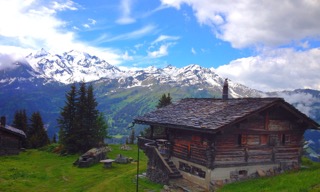
The main event has stout characteristics, with 111km and 8,400m of vertical gain- aptly named X-Alpine. Topping out at Orny with 2826m and traversing through historical locations such as Grand Col St Bernard.
And like most enthusiastic and committed organisations, they hold 4 other, events on the same weekend. Allowing people of all ages and ability levels to experience trail running, Swiss style.
Traversèe: 61km with 4000m elv. gain
Liddes-Verbier: 29km with 2500m elv. gain
X-Direct: 6km with 650m elv. gain
Discovery Trail: The Sunday morning event for kids aged 4-14 y.o.
Verbier and its surrounding regions including Pays du St-Bernard (Yes, its symbols is the St-Bernard dog) are investing a lot of time an effort, into its Summer season offerings.
Is it working? Based on a successful 8th edition of TVSB. Its certainly on the right track or trail, I should say.
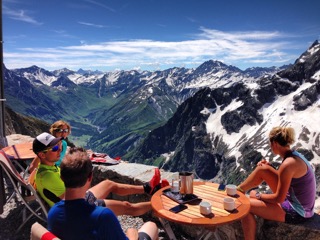
Switzerland is very… beautiful, but it is a very clean beautiful. Although I am an Australian, I can tell when I enter Switzerland, it has a special look and feel to it.
Its orderly, chalets are uniform, its mountains and gardens are beautiful- Just like Toblerone.
Except when a man, asks you to lowering yourself, face first down a damn wall from 100m high. At this point, I started to question the straight Swiss rationale. But it was legitimately safe and fun.
There are different Valleys within Valais (south west pocket of Switzerland). They all produce a different cheese, are home to different fighting cows and have different, yet still beautiful views, of the same mountains. Each valley is home to different mountain huts, housing mountaineers, day hikers and guardians all summer long.
The mountain huts hold a different view of the mountains, which can only be described as utterly magnificent.
Visiting the Valais Region for the TVSB event, allowed myself and PIC Lucy, to experience some of the summers best activities.
Probably not ideal for event preparation, but for experiencing the region, meeting the locals and getting an understanding of the history, they are all, must do’s.
Jumping off a mountain from 2000m high, with a paragliding wing and a large man strapped to my back, was a little nerve racking. Until he humbly mentioned, that he is 3 times, Swiss National Champion in Paragliding. Its the middle ground between skydiving and base jumping. My advice is to continually acknowledging that you feel fine and would like to go faster and be in control of the steering, from time to time. That way, your in for one incredible ride.
Not partaking in the TVSB 111km event, was due to the upcoming Skyrunning World Championships. Being 2 weeks away, it just wouldn't allow adequate recovery for the main event of the year.
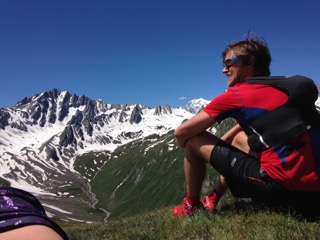
TVSB statistics are very similar to The Skyrunning World Championships, this is a little indication, that TVSB is a serious mountain race.
Allowing a swift transition to the 29km event, participation in one of the TVSB events was still on the cards. I didn't want to miss the energy, that was building for the weekend ahead.
That week, we met Jules-Henri Gabioud, I was told he has won the Tor Des Geants… instant man crush. Then he proved to be one of the nicest people in the sport. We hiked up to l’A Neuve Cabane, for homemade rossti, made by his mother, with a view of Mt Dolent, which is home to the borders of Switzerland, France and Italy.
Jules went on to win the TVSB 111km X Alpine event. A BOSS!
There was no end to experiencing this region in its full light.
Going a step further to experiencing the mountain hut life at 3030m, was at the Valsorey Hut. Made even more fun, by not mentioning the small detail of being vegetarian, until after the tray of meat for dinner, was place on the table.
Staying in the Grand Col St Bernard Hospice was eye opening for two main reasons. One building dates back to over thousand years old and walking through it, makes you feel and realise, that 1000 years is a long time! Secondly, it is along the Via Francigena Pilgrimage, walked by many, which goes from Canterbury (UK) to Rome (Italy). Approximately 1700km… That is an Ultra!
Missing the 111km event, meant missing some of its great trails on race day. So It was planned to run on the TVSB course from the St Bernard Hospice to the town of La Fouly. A small climb over the snow covered pass and a large decent to town.
It was just one of those unforgettable days on the trail.
But Its not all running, when there is an event on the weekend, so we were matched up with one most enthusiastic e-Bike guides on the Mountains. Taking breaks for traditional herbal liquor and hearing the truth behind Swiss art, fighting cows and why Verbier is a place to ‘recharge, relax and become alive, again’.
The 29km event, although shorter, still packed the required punch for mountain running. With 2500m of elevation and organised with Swiss like military precision. It was what you hope for when you run, in this part of the world.
Although the 29km event is not a race. The organisation, hold this event to encourage participant to enter with no, ‘race’ like pressure. A way to encourage.
‘The ranking is not what matters most, which is exactly the philosophy we like’- Matt Girard, TVSB
With this philosophy, trail running will always be inclusive, welcoming and encouraging.
Growing in a way, that will largely ensure longevity for the sport.
I have repeated a number of adjectives in this article, mainly, beautiful, to try describe Switzerland.
But this word does not apply to Raclette. This stuff, is not conducive to a good night sleep, despite how enjoyable it is to eat and the laugh it creates for tourists, at the dinner table.
Trail Verbier St-Bernard, is on again in 2017, July 7-8-9th.
Also be aware, that when a Swiss local, describes a run as ‘Flat’, that immediately translates to very hilly with good views. There is no exception to this rule.







